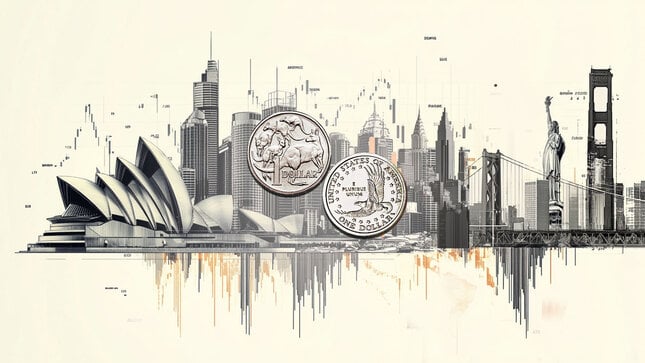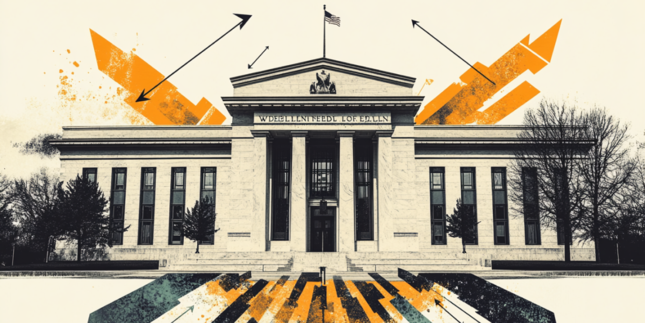USD/JPY Exchange rate
Editors’ Picks

AUD/USD hovers around 0.6650, unfazed by poor China's activity data
AUD/USD is keeping its range around 0.6650 in Monday's Asian trading. little affected by downbeat China's activity data for November. The country's Retail Sales, Fixed Asset Investment and Industrial Production data came in below forecasts and refuelled economic growth concerns.

USD/JPY drops toward 155.50 amid Fed-BoJ monetary policy divergence
USD/JPY stays under pressure toward 155.50 in the Asian session on Monday. The pair remains on the back foot as the Japanese Yen continues to draw support from the expectations of Fed-BoJ monetary policy divergence and a risk-off market profile. Fedspeak is next in focus.

Gold regains traction toward $4,350 in the final full week of 2025
Gold price picks up bids once again toward $4,350 in Asian trading on Monday. The precious metal extends its upside to the highest since October 21 amid the prospect of interest rate cuts by the US Federal Reserve next year. The delayed US Nonfarm Payrolls report for October will be in the spotlight later on Tuesday.

Week ahead: US NFP and CPI, BoE, ECB and BoJ mark a busy week
After Fed decision, dollar traders lock gaze on NFP and CPI data. Will the BoE deliver a dovish interest rate cut? ECB expected to reiterate “good place” mantra. Will a BoJ rate hike help the yen recover some of its massive losses?

Big week ends with big doubts
The S&P 500 continued to push higher yesterday as the US 2-year yield wavered around the 3.50% mark following a Federal Reserve (Fed) rate cut earlier this week that was ultimately perceived as not that hawkish after all. The cut is especially boosting the non-tech pockets of the market.
Majors
Cryptocurrencies
Signatures
USD/JPY
The USD/JPY (US Dollar Japanese Yen) currency pair is one of the 'Majors', a group of the most important currency pairs in the world. The Japanese Yen, known for its low interest rate, is frequently used in carry trades, making it one of the most traded currencies worldwide. In the USD/JPY pair, the US Dollar is the base currency and the Japanese Yen serves as the counter currency.
Trading USD/JPY is also known as trading the "ninja" or the "gopher", although the latter nickname is more frequently associated with the GBP/JPY pair. USD/JPY usually has a positive correlation with other pairs like USD/CHF and USD/CAD, as all three use the US Dollar as the base currency. The value of the pair is often influenced by interest-rate differentials between the two central banks: the Federal Reserve (Fed) and the Bank of Japan (BoJ).
HISTORIC HIGHS AND LOWS FOR USD/JPY
- All-time records: Max: 360.00 December 1970 – Min: 75.57 on 01/10/2011
- Last 5 years: Max: 161.95 on 28/06/2024 – Min: 101.18 on 06/03/2020
* Data as of December 2024
USD/JPY 2025 FORECAST
In the USD/JPY 2025 Forecast , FXStreet analyst Yohay Elam indicates that USD/JPY is likely to start the year bearish due to fears of trade wars, Donald Trump's entry into the White House and expected Federal Reserve (Fed) rate cuts. However, a bullish turnaround is anticipated in the following months as Trump's trade deals stabilize global markets, weakening the safe-haven Yen. Further gains are expected in the latter half of the year, driven by a more hawkish Fed and disappointment in the Bank of Japan’s (BoJ) inaction on rate hikes.
From a technical point of view, USD/JPY remains in a long-term uptrend for 2025, supported by its position above the 50-week SMA. Key resistance levels include 156.97, 161.81, and 170.43, with the latter aligning with the 138.2% Fibonacci extension. On the downside, support lies at 147.54, 139.73, and further down at 136.72 and 127.15.
INFLUENTIAL CURRENCIES FOR USD/JPY
The USD/JPY pair can also be impacted by other currencies, in particular the Euro (EUR) and the Chinese yuan renminbi (CNY). This group also includes the following currency pairs: EUR/USD , GBP/USD , AUD/USD , USD/CHF, NZD/USD , USD/CAD , GBP/JPY and EUR/JPY .
MOST INFLUENTIAL ORGANIZATIONS FOR USD/JPY
- The Federal Reserve (Fed) is the central bank of the United States (US) and it has two main targets: to maintain the unemployment rate at its lowest possible levels and to keep inflation around 2%. The Federal Reserve System's structure is composed of the presidentially appointed Board of Governors and the partially appointed Federal Open Market Committee (FOMC). The FOMC organizes eight scheduled meetings in a year to review economic and financial conditions. It also determines the appropriate stance of monetary policy and assesses the risks to its long-run goals of price stability and sustainable economic growth. The FOMC Minutes, which are released by the Board of Governors of the Federal Reserve weeks after the latest meeting, are a guide to the future US interest-rate policy.
- The Bank of Japan (BoJ). It is the central bank of Japan. The BoJ sets monetary policy in the country and its mandate is to issue banknotes and carry out currency and monetary control to ensure price stability, which means an inflation target of around 2%.Kazuo Ueda is the 32nd and current Governor of the BoJ. He is widely regarded as an expert on monetary policy but was considered a surprise appointment by analysts. Ueda is the first academic economist to lead the BoJ in the post-World War II era.